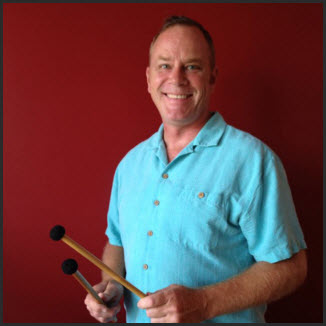In this next video I talk about the ending of a timpani roll. Sometimes you will see that the end note is tied to the rolled note and other times you will see or maybe hear that there needs to be some separating between the roll and the next note.
It’s an important technique to practice starting and stopping with either hand. In the exercise written bellow I’ve written Right (R) under the D and Left (L) under the A, but you can mix and match the sticking on your own. Just make sure your practice both ways with both hands.
Watch Me Demonstrate Tied and Separated Timpani Rolls in this Video Lesson
Here’s What You Need to Remember for Separated and Tied Timpani Rolls
- Make a difference between the roll with the tie to the next note and the roll without
- The tied note should just flow directly from the roll
- To play the non tied note you need to lift from the roll and play the next note, but not too soon or too late. If you are too soon the roll won’t sound long enough and too late you’ll mess up the rhythm.


I have a question for which I must admit I already have my own answer(!) but I would like to get your opinion because it seems that you know music well. In a case where a timpani rolls (tr) a single note in a continuous sequence of bars (let’s take for example 8 bars in 3/4, dotted-halves w/ “tr” above each note) but there are no ties. Is a re-articulation for each downbeat implied, or is it a continuous unbroken roll as if the notes were tied across the bar lines? I believe the former is correct and the latter would be incorrect. What is your position on this? Thank you!
Good question. Usually there would be no rearticulation for a passage like this but the exception would be dictated by what else is heard in the orchestra. The musical line or phrasing may tell you to add separation between each dotted half, or add an agogic accent on one of the bar, etc…
If it is a solo then I would play straight through without any accents and treat the passage as if the notes had ties.